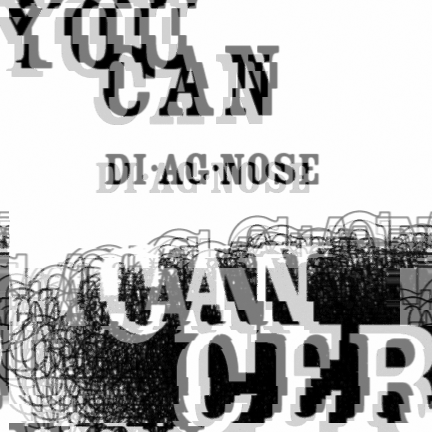Diyagno
Artifacts for the Future 2068
Diyagno empowers users by letting them choose when and where their illnesses are diagnosed. Additionally, whether the user wants to be surrounded by family and friends in their home, next to a significant other on the beach, or by themselves in fast food parking lot, Diyagno allows users to control who is with them and how their diagnosis is delivered.
World
In the year 2068, machine learnings ability to diagnose diseases is significantly more reliable than a clinicians diagnosis, and companies like Diyagno have shifted healthcare screening into the home, healthcare has changed considerably. The cost and human power dedicated to diagnosing diseases have shifted towards treatment and researching more rare diseases. Through genetic editing technology like Crispr, the procedure is much less invasive. Clinicians can snip out, insert, and reorder DNA which makes disease treatment much less devastating.
Key Functionalities
Anyone can identify and diagnose a life-threatening disease like cancer using the Diyagno system. Diyagno is a robust health diagnostic system that can be installed on any device and used to determine any disease. Users can monitor their bloodwork as well as take their images like x-rays, CT scans, and MRIs. Users can remotely access their bloodwork through their Diyagno vascular implant [3]. Through machine learning, Diyagno compares your results against its database and returns a diagnosis along with personalized treatment options.

User
Thanks to significant reductions in the cost of healthcare diagnostic, almost 95% of the world’s population has a smart device that uses the free Diyagno system. Since machine learning can serve expert, personalized diagnosis and Diyagno has reinvented the idea of early detection; the public no longer has to worry about false diagnoses and preemptive treatment.
Scenario
Every few months Rabia will include an x-ray scan in her morning routine. She knows there’s usually nothing to worry about, but the Diyagno CUI knows she’s a bit of a worry-wart. See, Rabia has used Diyagno for years. From her daughter’s grade two ankle sprain to her father’s kidney tumor. Not only does Diyagno learns the user’s health-related demographics and vitals, but the system also monitors the user’s anxiety level and learns how they may respond to stressful situations.
Rather than saying some archaic like “it’s time for your three-month cancer scan,” Diyagno shows a much higher level of emotional intelligence. The Diyagno CUI reminds Rabia of a heartwarming, funny story about her mother. When her laughter subsides, Rabia remembers her mothers struggle with breast cancer. As she recalls how barbaric, invasive, and antiquated the cancer diagnostic system was for her mother, she is subtly reminded of how she should do her three-month scan.

Rabia took a deep breath and stood in front of her device while the Diyagno system scanned her body [4]. Diyagno has identified a lump, but rather than saying something crude like, “tumor detected, here are your treatment options,” Diyagno let her know it found an area of concern [2] and that she should call her husband, Abraham. See, the system knows that the possibility of a life-threatening illness like cancer will bring Rabia a lot of anxiety, and despite how far technology has come, it will never replace the comfort and support she finds in her husband. (Of course, this is not a universal setting, the system will adjust based on the individual’s preferences and worldview.)

The couple agreed to use Diyagno to look into her lump later in the day. The system keeps her distracted by reminding her of funny stories in her past. After an otherwise routine day, the couple quietly walks to their bedroom much earlier than they usually would [5]. Rabia holds her breath as she opens the Diyagno report. The system senses that Rabia is ready to hear her diagnosis, which is fortunate because there’s no good time to be diagnosed with cancer. With a delicate balance of gentle, yet clear wording, Diyagno informs her that she has a tumor that needs treatment [6]. Through machine learning, Diyagno has a library of words that are most comforting for anyone receiving this news and specifically for Rabia.



Abraham grabs the device and does a handheld scan [1]. Sure enough, the mass is still there. Diyagno presents information about treatment, survival rates, and support groups that the couple can peruse at their leisure [7]. What does that even mean? A thousand thoughts run through the couples head. Reality hasn’t set in yet, and they are still in shock. Through the evening, they cry, laugh, and share stories. They have the privilege of learning the details of her diagnosis at their own pace.

Here’s a PDF poster with the same information
Inspiration:
This speculative project came out of our studio’s workshop with Krissi Xenakis and found inspiration by a machine learning project done by the Stanford Artificial Intelligence Laboratory. Reading: Stanford and Academic Article.

